Latest Posts

Probing Your Simulation Results
For a transient simulation, imagine if you could simply insert a virtual sensor in a model at a certain location and then monitor the evolution of a field value over time while solving. In COMSOL Multiphysics® you can do just that by using Probes. You define a probe in the Model Builder tree right under the Model Definitions node. Measuring the value at a point is not the only thing you can do with probes, but in this blog post we […]
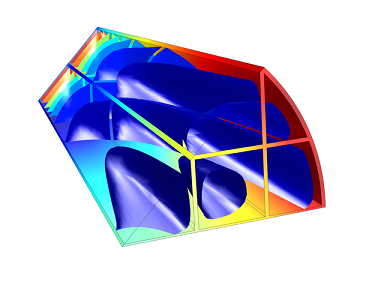
Modeling Chemical Reactions: Thermal Stress Analysis
The beauty of COMSOL is that it provides a unified modeling platform no matter what type of simulations you are performing. This is almost unique to the CAE market. Recently we showed you how to model chemical reactions using a monolith reactor as our example. First we walked you through solving the reaction kinetics and then involving plug flow, next we created a full-scale 3D model of the reactor. A chemical engineer may feel comfortable using a software optimized for […]

Optimal Distribution: Tree Roots and Microreactors
I love trees and my favorite is definitely the ficus, all varieties included. A few weeks ago I had the chance to admire a stately ficus microcarpa (see figure below). What struck me above all were its aerial roots. Roots are designed to absorb water and nutrients, sustaining the tree and synthesizing substances responsible for its growth. A thought crossed my mind right away: the shape of those roots and the way they coalesce have surely been optimized by Mother […]

The Graphene Revolution: Part 1
Graphene is a special type of material consisting of a single layer of carbon atoms arranged in a hexagonal lattice. Graphene in its stable form was discovered at the University of Manchester in 2003 (coincidentally while I was there studying for my Masters degree) and resulted in Nobel Prizes in 2010 for the two researchers who discovered it. Recently, graphene has been making the mainstream news; the European Commission has pledged €1 billion (yes, that’s billion with a b) to […]
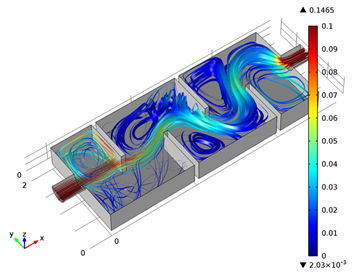
Water Purification Using Ozone
Water purification is the process by which chemicals, contaminants, and sediments are removed from dirty water to make it clean, and there are many processes through which this can be done. What you might not know, is that ozone molecules can be used as a means of disinfection in the purification process. “Ozonation” has been used to purify water, kill germs and bacteria in food, and even get rid of bad smells. Not only does ozonation provide clean water without […]

Acoustofluidic Multiphysics Problem: Microparticle Acoustophoresis
The use of acoustic waves to manipulate suspensions of particles, such as cells, has inspired the work of many researchers, paving the way for the field of ultrasound acoustofluidics. The manipulation is achieved in many ways, including using bulk acoustic waves (BAW) and surface acoustic waves (SAW), as well as acoustic radiation forces and acoustic streaming-induced drag. The latter two combine to produce the acoustophoretic motion of the suspended particles; i.e., movement by means of sound, and the methods provide […]
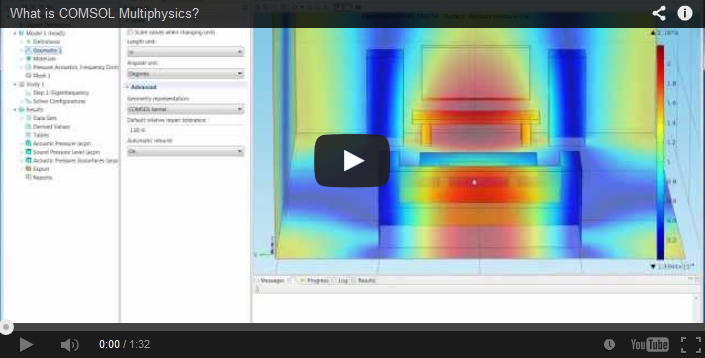
What Is COMSOL Multiphysics?
You may be wondering “What is COMSOL Multiphysics?” In short, COMSOL Multiphysics is a comprehensive simulation software environment for a wide array of applications, but structured and user-friendly for all to use. The best way to answer the question of what our software can do is to show you. This is why we have created a video that gives you a brief overview of the capabilities you can possess with the software in your hands.
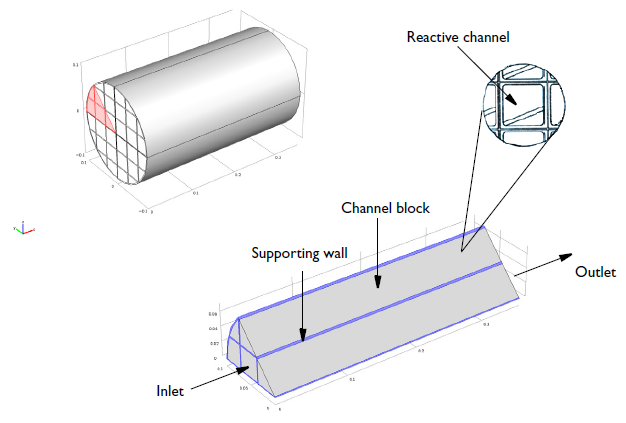
Modeling Chemical Reactions: 3D Model of a Monolith Reactor
In a previous blog post we dealt with the reaction kinetics and modeled plug flow of a monolithic reactor in the exhaust system of a car. The goal was to determine the ideal dosage of ammonia to reduce the nitrogen oxide levels emitted into the air. After understanding the chemistry of our problem, it is now time for the second part in our “Modeling Chemical Reactions” blog series. Here, we will go through the steps of generating a 3D model […]
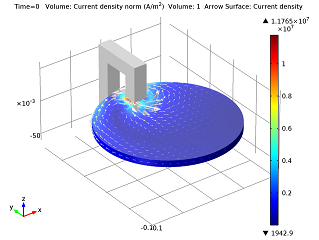
Simulating Eddy Current Brakes
Last week you saw how you can simulate the heating of a car’s brake discs. This reminded me of another type of brake — the eddy current brake (also known as magnetic brake). Whereas the other model was a study in heat transfer, eddy current brakes deal with electromagnetics.
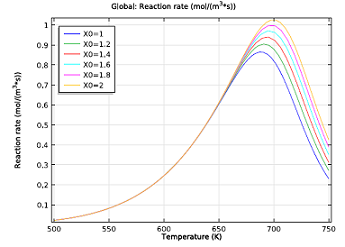
Modeling Chemical Reactions: Kinetics
In chemical reaction engineering, simulations are useful for investigating and optimizing a particular reaction process or system. Modeling chemical reactions helps engineers virtually understand the chemistry, optimal size and design of the system, and how it interacts with other physics that may come into play. This is the first of a series of blog posts on chemical reaction engineering, and here we will have a look at the initial stages of modeling the application: the chemical reaction kinetics.

Introduction to COMSOL Multiphysics, a Book to Get you Started
What does it take to get started using COMSOL Multiphysics? Of course, it depends on where you set the bar. However, grasping the workflow and handling the basic tools can be relatively easy to pick up. To make this process even smoother, first-time users will benefit from the recent major update of the COMSOL Multiphysics instruction manual. The book, Introduction to COMSOL Multiphysics, is a valuable tool for learning COMSOL simulation software and the new version is now available for […]
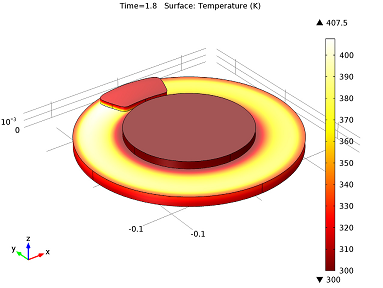
Simulating Heating of Brake Discs in a Car
Cars need brakes for obvious reasons, and you don’t want these to fail. Brake failure can be caused by many things, one of which is the overheating of the brake’s disc. As I’ve said before, no engineer wants to design a product that fails, which is also true in the case of brake-disc design. Let’s study a scenario of a car in panic brake mode, and find out how hot the brake discs and pads get as well as how […]
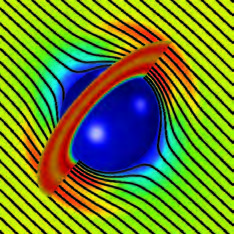
Metamaterials Make Physics Seem Like Magic
Metamaterials are a new and emerging technology with vast potential to reshape our views on what is and isn’t possible in this physical world of ours. Unlocking the mysteries and overcoming the obstacles associated with metamaterials would lead to a host of technological advances once thought impossible by even the most imaginative of individuals. From making computer chips smaller and faster than the most advanced current ones, to protecting structures from earthquakes, to developing imaging technology that doesn’t harm tissue […]

When Marshmallows Become Rock-hard
A while back, I bought a bag of marshmallows, indulged a bit, and then forgot about the opened bag for a few weeks. To my surprise, and disappointment, when my marshmallows cravings returned the top ones were rock-hard while the bottom ones were almost as soft as when I bought them. Why was this the case? By leaving the bag open, water had migrated from the marshmallows into the air.

Electrical: The Bumblebee Electrifies Anyway
“The Bumblebee Flies Anyway” was a book by Robert Cormier that I read as a young teenager. In it, Cormier describes how bumblebees are natural anomalies as they seemingly do not have the aerodynamic capability to actually fly. Their wing span and flapping speed should not provide enough lift to allow flying, and this is a fact that I have always associated with bumblebees since. Yet, this has been proven not to be true, as a closer investigation of the […]
Long-time Multiphysics User on COMSOL for Heat Transfer
Having used COMSOL Multiphysics for over six years now, we are pleased to have Dr. Jon Ebert, Director at SC Solutions, join us in the next Mechanical Engineering Magazine Webinar Series titled “Heat Transfer in Solid and Fluids”. On March 7th, he will co-host an instructional webinar together with COMSOL’s John Dunec. Dr. Ebert will discuss SC Solution’s simulation activities within a wide span of heat transfer-related applications, particularly with respect to semiconductor manufacturing. As a long-time user of COMSOL […]

Upgrading the Nuts and Bolts of the Electrical Grid
The electrical grid describes the network created for producing electricity, transmitting it and delivering it to the consumers. A “smart grid” is an electrical grid that gathers information on the suppliers and consumers automatically to improve efficiency and sustainability in the system. As the automated technology improves, the hardware that physically connects the electrical grid together must improve as well. This hardware, the “nuts and bolts” of the grid, is comprised of transformers, cable joints, terminations, bushings, and fault current […]

Boosting COMSOL’s Cooperation with Siemens PLM Software
In April last year, we entered into a partnership with Siemens PLM Software and started developing the functionality that would connect COMSOL Multiphysics® simulations to Solid Edge® CAD modeling. Siemens gave us access to their tool, and we were quick in developing LiveLink™ for Solid Edge® as part of the version 4.3a release. This project led to boosting our cooperation with Simens PLM Software, as we had already implemented Parasolid® to be an integral part of the CAD Import Module […]
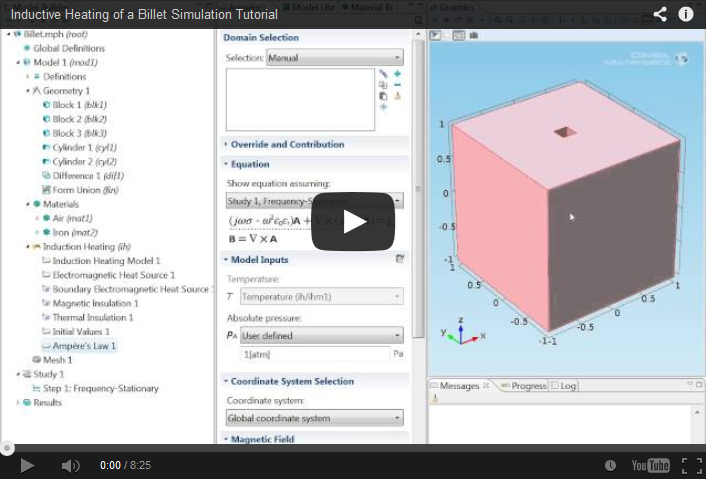
Inductive Heating of a Billet Simulation Tutorial
Induction occurs when a metal object moves in the presence of a magnetic field inducing a current in that object. The induced current causes it to heat up (called inductive heating), as all current does. Yet, simulating these two coupled physics together can be difficult to do as they are intrinsically based on different time scales. COMSOL Multiphysics is able to cleverly simulate them through combining the frequency domain modeling of the magnetic field with a stationary simulation of the […]
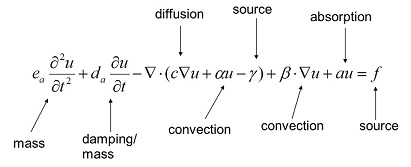
Multiphysics versus FEA
In a popular post from last year, I discussed accessing and manipulating the underlying equations in COMSOL. This blog post instigated reader comments, and most of the respondents appreciated, or even required, the ability to look at the mathematical model (i.e., equations) behind the physics. While considering this, I realized that there is more to the story, and with a little perspective, the community could benefit from further discussion.
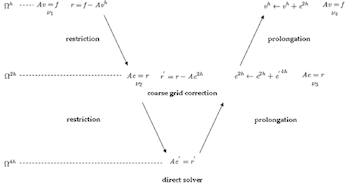
On Solvers: The V-Cycle Multigrid
As discussed previously on the blog, iterative methods efficiently eliminate oscillatory error components while leaving the smooth ones almost untouched (smoothing property). Multigrid methods, in particular, use the smoothing property, nested iteration, and residual correction to optimize convergence. Before putting all of the pieces of this proverbial puzzle together, we need to introduce residual correction and dive a bit deeper into nested iteration. Let’s begin with the latter of these elements.
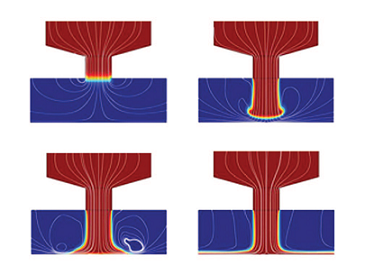
Fluid Flow: Smooth Optical Surface in Minutes
Ultra-precise optical components require blemish-free surfaces that often cannot be achieved by the machining processes that grind these components. Fluid jet polishing (FJP) is a new technology being developed by Zeeko Ltd to replace the hand polishing that was often required. With the help of COMSOL, Zeeko was able to create a product that polishes the optical components in only ten minutes instead of an entire day, and without waveforms.
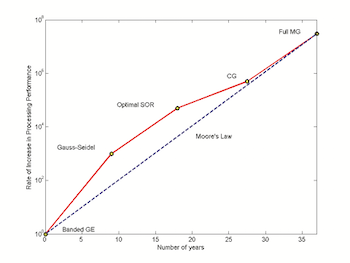
On Solvers: Multigrid Methods
Solution methods are a valuable tool for ensuring the efficiency of a design as well as reducing the overall number of prototypes that are needed. In today’s blog post, we introduce you to a particular type of method known as multigrid methods and explore the ideas behind their use in COMSOL Multiphysics.
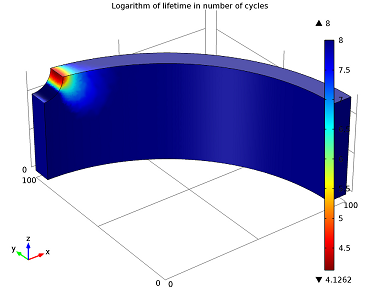
Infamous Failures of Fatigue
If you’ve studied structural mechanics you’re probably familiar with stories of planes falling out of the sky due to fatigue (no one wants to be the engineer who designed an airplane that crashed…). Jimmy Stewart made a famous movie about that, but different from the usual horror stories of fatigue is the accident in 1919 of a storage tank that burst in Boston, spilling molasses onto the streets at 35 mph (56 km/h). The Boston Molasses Disaster, as it’s referred […]
